 |
The News Service | |||
Profiles | ||||
|
Physical sciences departments to add nine faculty this fall
John Jannotti in computer science;
Brian Moulton in chemistry;
Gabriel Taubin and
Anubhav Tripathi in engineering;
Dan Abramovich,
Alexander Braverman and
Jeffrey Brock in mathematics; and
Dmitri Feldman and
Vesna Mitrovic in physics. 
Dan Abramovich Dan Abramovich is a world leader in algebraic and arithmetic geometry. His research interests include problems on subvarieties of abelian varieties; the problem of bounding torsion on elliptic curves; moduli spaces of vector bundles on curves; uniformity conjectures for rational and integral points; resolution of singularities; stable maps; semistable reduction; and birational geometry. He has written more than 25 paper. Among the more recent titles are “Algebraic Orbifold Quantum Products,” “Moduli of Twisted Spin Curves” and “Torification and Factorization of Birational Maps.” Abramovich received a B.Sc. from Tel Aviv University in 1987 and his doctorate from Harvard University in 1991. He comes to Brown after three years as a C.L.E. Moore instructor at the Massachusetts Institute of Technology and nine years as an assistant and then associate professor at Boston University. In 1996, he received an Alfred P. Sloan Research Fellowship; he also has received a number of research grants through the National Science Foundation. He has held numerous visiting and postdoctoral positions in the United States, France and Germany. – Tracie Sweeney 
Alexander Braverman Alexander Braverman is an internationally known mathematician whose work blends algebra and geometry, playing one against the other to deduce information about both. Most recently, his interests have led him to explore the border of algebraic geometry and theoretical physics. Braverman graduated summa cum laude with a B.Sc. from Tel Aviv University in September 1993. Shortly afterward, his first paper, “On embeddings of quantum groups,” was published by the Academie des Sciences, Paris. Since then, more than 20 papers of which he is author or co-author have been published in scholarly journals around the world. In 1998, Braverman graduated with distinction with a Ph.D. from Tel Aviv University. He has taught at Tel Aviv University, the Massachusetts Institute of Technology and Harvard University. He also has held visiting positions at the Institute for Advanced Study in Princeton, L’Institut des Hautes Etudes Scientifiques in France, and at the Weizmann Institute of Science and Hebrew University, both in Israel. Braverman, who will begin teaching at Brown in the spring semester, says he is excited about leading his students toward “an understanding of the philosophy of the subjects” that interest him. “Although I haven’t started teaching at Brown yet, it is common knowledge that students at Brown are very good,” he said. The caliber of Brown’s student body, combined with the prospect of teaching at a small private university, are what lured Braverman to accept Brown’s offer to join the department. According to Joseph Silverman, chair of the Department of Mathematics, Braverman “brings a new area of strength that will complement and expand other strong areas in the department.” – Tracie Sweeney 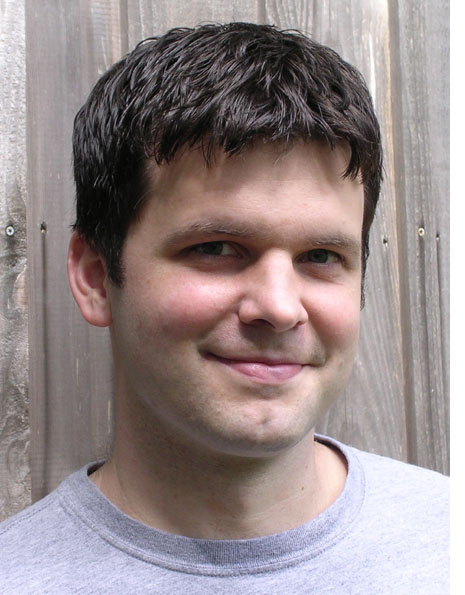
Jeffrey Brock Geometry and topology, hyperbolic 3-manifolds and Teichmüller theory, non-postive curvature and mapping class groups. This is the world of Jeffrey Brock, who has accepted Brown’s offer to join the Department of Mathematics, but who will defer his arrival until next fall in order to complete a fellowship at the University of Texas–Austin. Currently, Brock is principal investigator in an NSF-funded research project titled “The Classification Problem for Hyperbolic 3-Manifolds.” “Classifying mathematical objects plays much the same scientific role as classifying biological, chemical or physical phenomena in the development of these fields,” according to the NSF research abstract about Brock’s grant. In this project, Brock will try to solve the classification problem for a generic class of three-dimensional spaces called hyperbolic 3-manifolds. There is some speculation that the universe, rather than being a flat Euclidean space, is actually a hyperbolic 3-manifold. According to the abstract, “these non-Euclidean spaces have geometry locally like our own Euclidean space, but their large-scale geometry is expanding exponentially. ... William P. Thurston’s revolutionary and pioneering work in the 1970s and 1980s showed that almost all 3-manifolds are hyperbolic. ... From his contributions, a compelling conjectural picture of the right classification of hyperbolic 3-manifolds has emerged as a lasting problem for researchers in the field of geometry and topology.” Brock’s recent work with colleagues put the solution of this problem within reach. He will use his NSF support to continue collaborations to solve this fundamental problem, and to create a database of hyperbolic 3-manifolds for wider use by other mathematicians and physicists. Brock received his bachelor’s degree from Yale in 1992 and his doctorate from the University of California–Berkeley in 1997. He comes to Brown after three years as a Szego Assistant Professor of Mathematics at Stanford and three years as an assistant professor of mathematics at the University of Chicago. – Tracie Sweeney 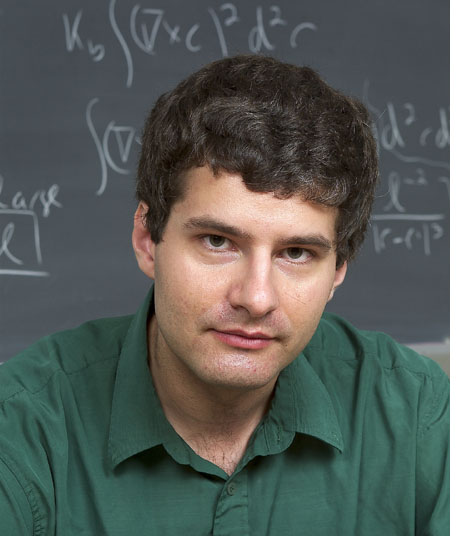
Dmitri Feldman Dmitri “Dima” Feldman comes to Brown after nearly two years as a postdoctoral appointee in the materials science division at Argonne National Laboratory. As a member of Argonne’s Material Theory Institute, Feldman took part in theoretical and experimental research efforts in condensed matter physics – the study of matter at larger-than-atomic scales. “Intellectually, condensed matter physics lies between mathematics and chemistry,” says Feldman, who is a native of Chernogoloka, a Moscow suburb that is the center of chemistry studies for the Russian Academy of Science. Feldman’s physics research focus areas, which include soft condensed matter, strongly correlated electrons, quantum and classical phase transitions, and disordered systems, neatly match this early environment and an interest in mathematics. As a teen, Feldman won the All-Union Mathematical Olympiad of the then-Soviet Union. He has bachelor and master of science degrees in the combined field of physics and mathematics from the Moscow Institute of Physics and Technology. In 1998, he received his Ph.D. in physics from the Landau Institute of Theoretical Physics, also in Russia. He has held postdoctoral or research positions at Landau and Israel’s Weizmann Institute of Science, where he received a distinguished Koshland postdoctoral fellowship. At Brown, Feldman will join other faculty (from chemistry and engineering, as well as physics) engaged in condensed matter research and this fall will teach a graduate-level course on quantum mechanics. Among Feldman’s current research interests is an investigation of how electrical current works at the nanoscale. By applying sound to narrow channels called quantum wires, scientists have been able to drag single electrons through the wires. In theory, this technique, one of several methods of producing current in quantum wires, could power a generation of functional nanoscale machines. “We can do this in the physics laboratory,” says Feldman. “We need at least several years before engineers can join physicists in developing devices that can utilize quantum wires.” – Ricardo Howell 
John Jannotti John Jannotti will join the Brown faculty in January 2004 as an assistant professor of computer science. Jannotti’s latest research focuses on overlay networks. For his doctoral dissertation, “Network Layer Support for Overlay Networks,” he examined how Internet routers could be enhanced to explicitly offer support to overlay networks. His research has spanned many topics, however, from exokernels through software routers to wireless networking to, finally, overlay networks. “Today, I consider myself a systems researcher who realizes that, more often than not, systems research involves research in networking, in one way or another,” he says. Currently, he is intrigued by the use of Ultra Wide Band wireless networking, which he calls “fruitful ground for research in wireless protocols that intelligently determine optimal transmission levels to maximize the total bandwidth of the network as well as battery life of the individual participants.” Jannotti’s teaching methods will rely heavily on giving his students hands-on challenges. “As an undergraduate student, the classes I most valued were those that taught me to build real systems,” he says. “I found that I cared more about classes that built a single large system over the course of a term than those that presented material in easily digestible chunks, with little interaction between the work of one week and the next. Perhaps it’s no coincidence then that I hope to teach classes in a similar format, and instill the same kind of excitement in my students. ... I look forward to the challenge of encouraging curiosity while constantly emphasizing the importance of directing that curiosity toward useful systems.” Jannotti received his doctorate in electrical engineering and computer science in 2002 from the Massachusetts Institute of Technology, where he also received a master’s degree in electrical engineering and computer science (1998) and a bachelor of science in computer science (1997). In 2001 he was named an IBM Distinguished Research Fellow. – Tracie Sweeney 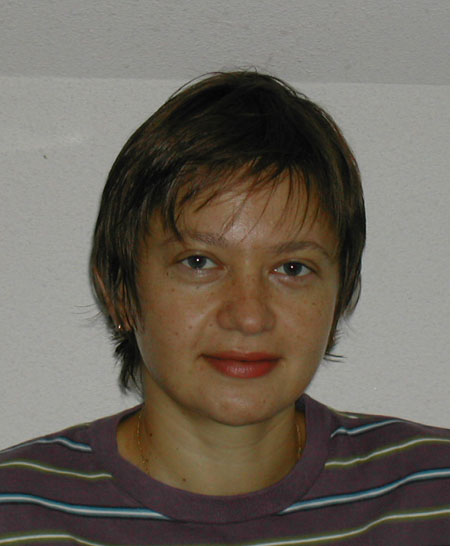
Vesna Mitrovic Vesna Mitrovic arrives at Brown after two years as a post-doctoral fellow at the Grenoble High Magnetic Field Laboratory in France. Mitrovic’s research is in condensed matter physics, using nuclear magnetic resonance (NMR) techniques to microscopically study highly correlated electronic systems in novel materials. “New, truly revolutionary industrial applications of materials are necessarily based on exploiting their remarkable quantum properties,” says Mitrovic, who in 2001 received a Ph.D. in physics from Northwestern University. Working in the National High Magnetic Field Lab facility at Florida State University in 2001, Mitrovic and other scientists were for the first time able to examine the behavior of a high-temperature superconducting material – observing the electrical and physical properties of the superconductor at extremely high resolution. The research and its findings may have implications for medical usage, potentially improving magnetic resonance imaging (MRI) technologies. “Such an application is just one example of the vibrant interplay between fundamental physics and developments in applied areas,” says David Cutts, chair of the Physics Department. “Condensed matter physics has a multitude of strong interconnections with engineering, biology, chemistry and other fields. Vesna Mitrovic brings exceptional skills in experimental physics, especially with the important area of NMR studies, which strengthens efforts at Brown in fundamental physics, such as understanding the physics of high temperature superconductivity, while at the same time enhancing related efforts in materials science, biophysics, nanotechnology and applied physics.” – Ricardo Howell 
Brian Moulton It was during his senior undergraduate year at Dalhousie University in the early 1990s that Brian Moulton came across a new class of heterocyclic molecules – molecules composed of rings of atoms with at least one non-carbon atom. Moulton, whose research interests include crystal engineering, supramolecular chemistry and materials chemistry focused on developing new materials for electrical, magnetic and optical use, would parlay the discovery into Diazans Limited, his own biotech company, founded in 1994 to research possible applications. “My research is unique in its approach,” says Moulton. “It bridges the gap between synthetic and pure and applied science.” In the case of his molecules, Moulton considered using the heterocyclic structure to create pharmaceuticals that could be useful in treating certain diseases. Although his company ultimately did not develop such products, Moulton considers his industry experience as a springboard. He sold Diazans in 1999, moved from his native Nova Scotia, and matriculated as a doctoral student at the University of South Florida with chemistry professor Mike Zaworotko, a leader in crystal engineering of new solids, as his faculty mentor. Moulton was able to progress quickly, completing his Ph.D. last spring after only three years. At the University of South Florida, Moulton, along with Zaworotko and other researchers, authored several highly cited and noted journal articles on materials science, including a seminal paper on polygons and polyhedra and nanoporous molecular assembly. “By arranging molecules in a given geometry and selecting molecules that ‘communicate’ to each other in a specified manner, the materials I make should ultimately exhibit the desired property,” says Moulton, offering the example of magnetic molecules or atoms arranged in a triangular configuration, which precludes the material from being antiferromagnetic. Moulton calls his research “necessarily interdisciplinary” and hopes to collaborate with other scientists in chemistry and engineering. This year he will teach an advanced undergraduate seminar in inorganic chemistry. – Ricardo Howell 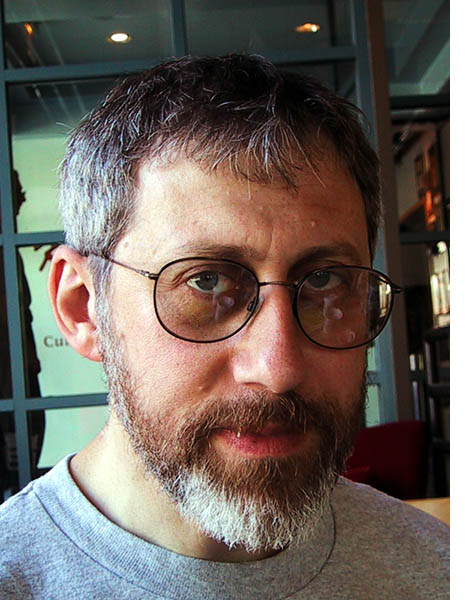
Gabriel Taubin Gabriel Taubin might one day help to design the American grocery shopping experience. The smart sensors and networks of smart cameras that he envisions now could one day be used by retailers to measure the time shoppers spend in front of particular products in store aisles – and through algorithmic estimation, help retailers determine which products deserve priority shelf space. “Our goal is to make the cameras and the computers behind them automatic,” says Taubin. Noting worker fatigue as a hazard that compromises current job effectiveness, Taubin says the technology might alternately automate the banks of monitors and surveillance cameras at malls and airports around the world, using real-time signal processing to measure the probabilities of certain security risks. Taubin, an electrical engineer who received his Ph.D. from Brown in 1991, joins the faculty after more than a dozen years at IBM’s Thomas J. Watson Research Center. At IBM, Taubin worked on object identification algorithms and mesh signal processing, developing algorithms to model, compress, transmit and visualize three-dimensional shapes. In the late 1990s, Taubin led a team of IBM researchers who participated in the 3-D scanning of Michelangelo’s Florentine Pietá. The 3-D geometric compression technology that Taubin developed resulted in multiple U.S. and international patents, is now part of the MPEG-4 standard, and has been incorporated into IBM multi-media software products. During a year as a visiting professor at the California Institute of Technology, Taubin developed his current research interest in building sensors with embedded processors and returned to IBM where he began to conceive hardware for real-time computer vision – an interest and an association he plans to continue at Brown. Taubin also plans to investigate the use of networks of smart cameras and smart camera networks for human-computer interaction in smart rooms, wearable computing, advance telecommunications applications, and 3-D shape reconstruction. In his first semester as a Brown faculty member, Taubin will teach a 100-level course on 3-D photography, where students learn skills and build tools to complete projects similar to the Michelangelo project. In the spring, he will teach an elementary engineering class. – Ricardo Howell 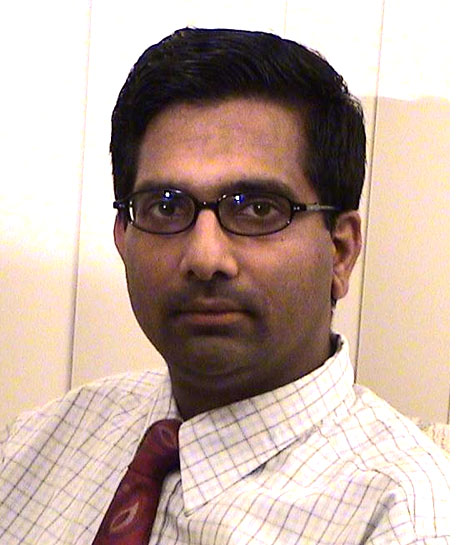
Anubhav Tripathi Blood is a suspension of cells in clear plasma, a viscoelastic fluid. But how do the cells in complex fluids behave when subjected to shear? Anubhav Tripathi may have an answer. Tripathi, a chemical engineer whose principal research interests are in fluid mechanics, including biofluidics, microfluidics, rheology and nanotechnology, traces his curiosity about fluid behavior to his undergraduate studies at the Indian Institute of Technology (IIT) in his native India. “I started to study the flow behavior of complex fluids around a sphere and thought, ‘This is interesting,’” he said. Soon, he was also examining the behavior of cells. “To model, to understand and to solve flow equations was very exciting.” Tripathi joins the Brown faculty after two years at Caliper Technologies, a California-based bio-tech company, where, among other projects, he worked on microfluidic chips, in which complex fluids are examined in a connected network of microchannels. He also worked on developing methods for detecting changes to the nano-structure of certain fluids after applying an electric field and on microfluidic cell sorting, including developing a detection and cloning system for certain mammalian cells. He has also served a researcher at MIT, as well as at the Levich Institute, in addition to serving as a lecturer at San Jose State University. Tripathi received both Bachelor and Master of Science degrees in chemical engineering from IIT amd earned his Ph.D. in the discipline from City University of New York in 1998. At CUNY he contributed to an award-winning new technique for rheology – the study of complex fluids under various stresses. Whether this model for assessing particle instability of certain complex fluids will be useful in examining a wide range of complex fluids is yet to be determined, he said. The passion to delve into fluid mechanics is one of the values Tripathi hopes Brown students will develop. “So many studies, including materials science, physics and the life sciences, are interrelated to fluid mechanics,” he said. “Hopefully, students will come and see it.” During the fall semester, Tripathi will teach EN81, Introduction to Fluid Mechanics. – Ricardo Howell ###### News Service Home | Top of File | e-Subscribe | Brown Home Page | ||||